Kids & Families/ Create a paper carrier for your treasures

Mandy Quadrio invites children to create their own unique paper carrier / View full image
The Children’s Art Centre has worked with artist Mandy Quadrio on a new 'Art Box for Kids' project. Quadrio’s hands-on activity, Paper Treasure Carrier, invites children to create their own unique carrier out of paper to hold their special objects and treasures, inspired by a display of carriers from Tasmanian bull kelp made by the artist.
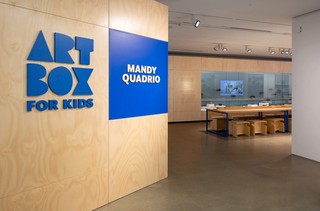
Mandy Quadrio invites children to create their own unique paper carrier / View full image
Quadrio works across sculpture, installation and mixed media, creating artworks that draw on her Lutruwita (Tasmanian) heritage. Quadrio hopes that children participating in the activity will take away a greater understanding of the artists culture, adding that 'by making their own paper carrier, they are participating in a long-time Palawa cultural practice [the traditions, languages, and beliefs of Aboriginal Tasmanians], and I’m really happy to be able to share this'.
Watch | Mandy Quadrio invites children to create their own unique paper carrier
Quadrio’s ancestors come from Tebrakunna, in the north-east of Tasmania; and Little Swanport, on the island’s east coast. The materials she uses are symbolically significant: they include abrasive steel wool (a familiar cleaning material) as a metaphor for the attempted erasure and 'scrubbing out' of Indigenous culture and histories; as well as Tasmanian bull kelp, through which the artist pays homage to the continuing presence and resilience of her people. She has said:
The bull kelp and the steel wool work together in telling both sides of the story of Australian colonisation... Quite often people talk about Tasmanian Aboriginal people as being extinct... I use this story to say, ‘No, we’re still here’.[1]
Tasmanian bull kelp is a robust and adaptive material that has been used by Quadrio’s people for thousands of years to create water carriers and other objects, including shoes, vessels, domestic coverings as well as being eaten as a food source. When using the material, Quadrio says, ‘it connects me to the old people and I feel like I’m walking in their footsteps’.
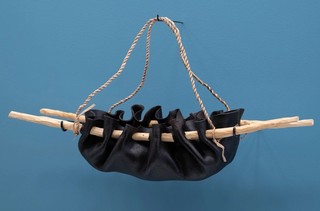
Tasmanian bull kelp carrier made by Mandy Quadrio / View full image
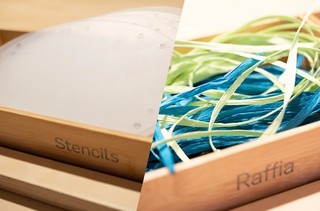
Mandy Quadrio invites children to create their own unique paper carrier / View full image
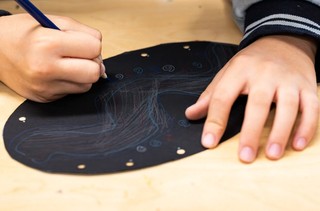
Mandy Quadrio invites children to create their own unique paper carrier / View full image
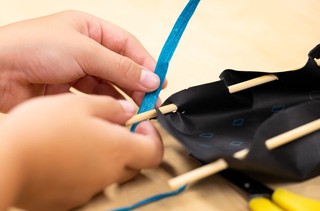
Mandy Quadrio invites children to create their own unique paper carrier / View full image
Jacqueline Tunny is Program Coordinator, Children’s Art Centre, QAGOMA
This text is adapted from an essay first published in QAGOMA’s Members’ magazine, Artlines
Art Box for Kids: Mandy Quadrio
31 May – 26 October 2025
Gallery of Modern Art (GOMA)
Brisbane, Australia
Free entry
Opening hours for this project differ from GOMA opening hours, check the website for details.
Endnotes
- ^ Mandy Quadrio, in an interview for the ‘Art Box for Kids’ introduction video, recorded 30 January 2025.

